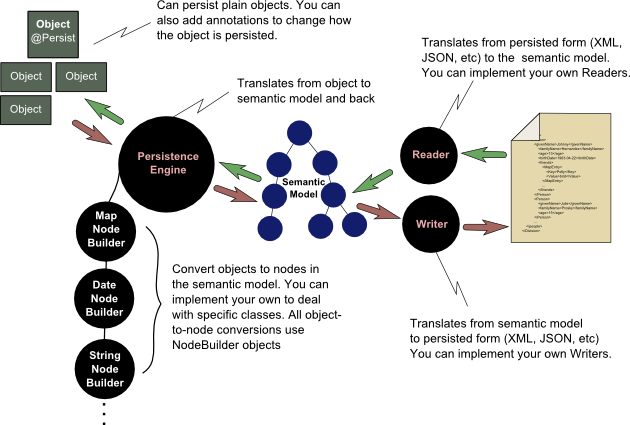FreezeDry
FreezeDry makes it easy to persist and serialize objects. You don't need binding files. In most cases you don't need to pollute your code with annotations. You don't need no-arg constructors. And you can persist top-level generic classes. FreezeDry supports JSON, XML, and flattened key-value pairs.
As an added bonus, FreezeDry has an object difference calculator for comparing objects and reporting back field level differences.
FreezeDry aims to be non-intrusive, flexible, and extensible. You can write and register you own classes for converting objects into a persisted form, and you get the translation to JSON, XML, and flattened key-value pairs for free.

"Ok" you smile to yourself, "Yet another persistence framework. Why should I care? I'll just go back to drinking my beer!"
Well now. FreezeDry is really simple to use, right out of the box. Look. Here's how simple it is to persist an object to XML:
new XmlPersistence().write( division, "person.xml" );
And then to reconstitute the object from XML:
Division division = new XmlPersistence().read( Division.class, "person.xml" );
FreezeDry provides a few interesting and useful features. And, of course it isn't for everyone. Nope. It's not. But the thing works right out of the box. If you need to persist an object and you don't care too much how the XML, JSON, or key-values are formed, then you can persist the object in one line of code. And load it back with another line of code. That's it. It's just that simple. And if you need to customize the way the object is persisted, you can do that too. But instead of dealing with tedious XML binding files, you can make simple customizations with annotations, and more complex customizations through extension to the code. I mean, you are a developer, right, not a config file junkie. So FreezeDry let's you do what you love: write code!
To learn more about FreezeDry, its structure, how to modify the way objects are persisted, and what comes with the current version, please see the [Overview]